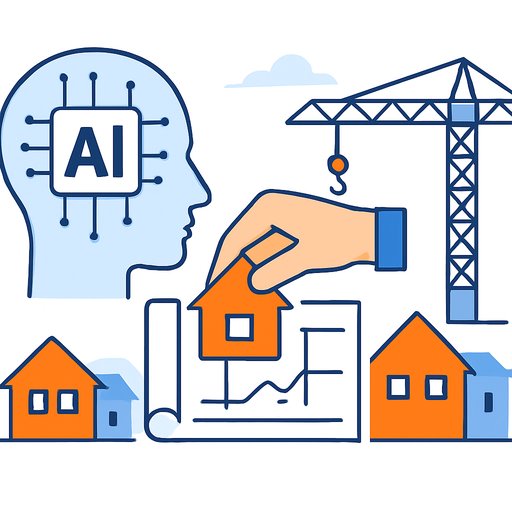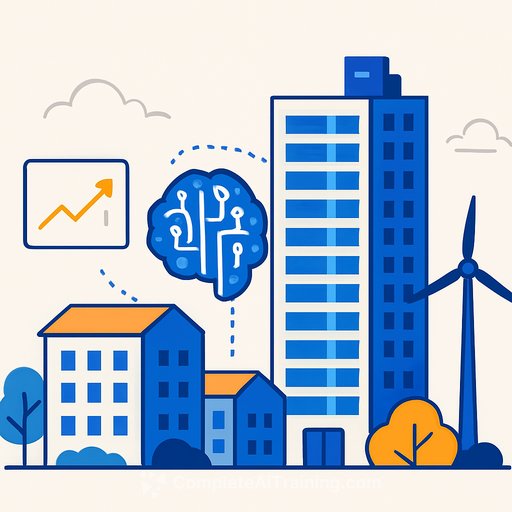D.R. Horton is using AI to speed land deals and get more homes built
D.R. Horton is partnering with Prophetic, a Portland-based startup, to compress the slowest part of the build cycle: finding, entitling, and moving on developable land. The goal is simple-cut friction from land decisions so more homes get to market faster.
The timing matters. A national housing deficit estimated in the millions and prices up more than 50% since pre-pandemic have squeezed buyers and limited builders. Costly lots and long due diligence windows don't help.
Key points
- Prophetic's AI-native platform analyzes land acquisition and development potential at scale.
- It pulls zoning manuals from every city and county in a state, then extracts the rules builders care about.
- The system tracks minimum lot size, density, and setback constraints by municipality and zone-updated quarterly.
- Currently active in 25 states, with plans to cover all 50 by June.
- Analysis time drops from hours to seconds, with direct citations back to source pages for trust and auditability.
Why builders and developers care
Underbuilding since the Great Recession left a deep supply gap. Faster, defensible land reads help teams move first, reduce dead deals, and focus capital on parcels that pencil. That edge compounds-especially in tight submarkets and during competitive bid windows.
For context on the supply gap and pricing pressures, see industry research from Zillow Research.
How Prophetic's system works
- Aggregates tens of thousands of zoning documents across cities and counties in a state.
- Uses large language models to extract rules by zone: minimum lot size, unit caps or floors, setbacks, and density constraints.
- Updates are pushed quarterly to reflect legislative changes.
- Returns answers with section titles and page references so teams can verify instantly.
"It's an incredibly large, tedious, detail-oriented process to take tens of thousands of these zoning documents and extract the rules, not only efficiently, but correctly," said Oliver Alexander, founder and CEO of Prophetic.
Alexander noted there are "a little over 440,000 different ways to describe what you're allowed to do on a piece of dirt" across the states they've analyzed. Their approach pairs zoning analysis with search so teams can query land potential in seconds instead of hours.
The speed advantage on land bids
"One of the largest challenges to providing affordable housing is the identification, acquisition and entitlement of land suitable for development. We are confident the insights provided by Prophetic are going to help us expand homeownership opportunities for hard-working American individuals and families," said Jason Jones, vice president of data analytics at D.R. Horton.
Faster reads mean faster offers. "If you have that much of an edge in your speed to decision, you effectively control your entire market, because before anyone else can decide, you've tied it up," Alexander said.
What to do next (for land, development, and acquisition teams)
- Run a pilot on your top three target metros. Compare AI-driven outputs to your current zoning due diligence and note variance.
- Integrate with your GIS and pipeline tools. Tag parcels by build type (SFR, townhome, duplex, garden MF) and risk flags.
- Require source citations. No greenlight without the section and page reference from the zoning manual.
- Set tolerance rules. Example: "±5% FAR variance acceptable; setbacks and height limits must match source."
- Measure ROI. Track deals won on speed, hours saved per parcel, and reduction in entitlement misses.
- Train your team on prompt patterns for consistent queries (e.g., "R-5 zone: min lot size, side/rear setbacks, max units/acre, parking, height"). For structured upskilling, see AI courses by job role.
Risks and guardrails
- Local amendments and overlays: Ensure updates capture city-specific changes, PUDs, and recent ordinances.
- Edge cases: Flag parcels requiring variances, floodplain exceptions, or conditional use permits for manual review.
- Data freshness: Quarterly updates are strong-pair them with pre-offer verification for high-dollar deals.
- Human-in-the-loop: Keep land use counsel and planners in the approval path on complex entitlements.
Bottom line
D.R. Horton is betting that faster, verifiable zoning analysis will translate into more lots controlled, more starts, and more closings. For teams fighting acquisition drag, this is a clear path to cut decision time without sacrificing diligence.
Speed wins bids. Proof wins committees. Combine both and the pipeline moves.
Your membership also unlocks:






